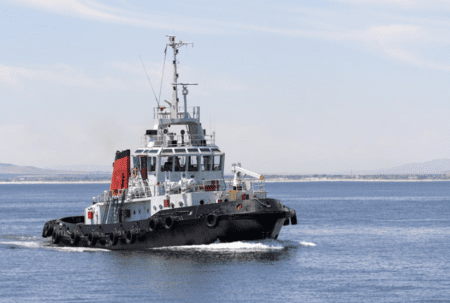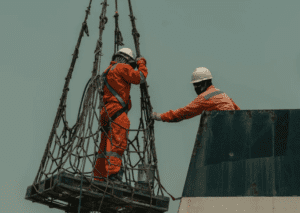The Basics: What to Know After You’ve Been Injured on a Vessel
If you are prepared to seek compensation for an injury sustained on a supply boat, crew boat, tug boat, or other vessel, your first step should be to educate yourself. Understanding the complexities of a maritime injury can greatly increase your chances of achieving the future you are entitled to. Fortunately, we have answers for any question you may have about maritime law, and how it relates to your workplace injury.
Let’s start with the basics.
How the Size of Your Company Can Influence Your Injury Case (And What You Can Do About It)
Many boat companies are smaller and don’t complete detailed accident reports or investigation reports after your accident. Therefore, one of the first issues that may come up in your claim is how well the accident was documented in written reports. While most very large offshore drilling companies such as Transocean, ENSCO and Diamond all have multiple reports that are completed after an accident, your smaller boat company may only have a basic ‘injury report’ that was completed after your injury.
This does not necessarily hurt your claim, but you do need to be sure to quickly get statements from any witnesses or co-employees who will support your claim. Also, very often emails back and forth between you and the company and between others in the company can be much more important in your case since these often serve as written documents which help your claim. The same is true with text messages these days.
For a more in depth look, we’ve compiled a list of the best practices for documenting your Jones Act case after a maritime injury.
Smaller Vessel Companies Can Quickly Make Changes to Cover Their Tracks
Next, just like your company may not complete 3 or 4 different types of reports after your injury, your company also may not document in writing when certain changes are made to your boat after your accident, and this can be a huge issue. It is much easier on a vessel to make changes and corrections to the vessel after your accident than it is on a large oil rig. We have had dozens of cases where the vessel or its equipment was changed after an accident and we had to dig deep to prove it for our clients.
I always suggest that photos are taken immediately after any accident, but especially if your accident happened on a vessel since vessels can more easily be changed than large oil rigs. In one crazy case, the boat owner actually took old, broken winches off his vessel the day after we served him with the court claim! Fortunately, we were able to obtain the scrap yard records to show this in court and obtained a great settlement for our client.
Your Company is Supposed to Meet Safety Guidelines
Your vessel accident may have been caused by the mobility of the vessel itself, which is a very common cause of injuries on vessels. Many injured vessel workers dismiss such accidents and assume that they simply were not careful enough while working on the deck. What you need to know though is that since the boat you worked on obviously floated and moved about on the water, you were subject to working on moving surfaces and uneven decks. This is important because there are detailed rules that required your vessel to have non-skid deck surfaces, proper handrails and other safeguards to protect you from slip and fall type injuries.
We have handled many, many dangerous deck surface cases over the years and have learned how rough it is for you guys to walk and work on the deck even during normal travel, much less offshore loading and unloading. The good news is that you can rely on the vessel design rules and Coast Guard rules that required your boat to have non-skid surfaces, proper matting, handrails, proper ladders and other safeguards to protect you.
Small Crew, Potentially Big Impact on Your Case
Many vessels have very small crews of less than 10 and most often less than 20. Some tugs only have 3 or 4 crewmembers per rotation. This means that what these few people say and how they testify can be very important in your case. Unlike oil rigs which have 100 or more people working on them, in your case you may only have 2 or 3 key witnesses whose testimony will be very important in your claim. Sitting down quickly with these guys to get statements from them can be very important in your case. We routinely obtain statements for our clients quickly after an accident to avoid ‘poor memories’ down the road. Filing your claim in court early also allows you to quickly document everyone’s version of your accident.
“Normal” Procedures Are Not Always Safe Procedures
I want to address the ‘but that’s the way we always did the job’ issue. After helping hundreds of injured rig and boat workers over the years, I can’t tell you how often our clients tell us that they can’t think of anything the company may have done wrong, since they ‘always’ did the job the way they were doing it at the time of the accident.
But the question in court is not how many times did your company do the job the same way? The question in court is did your company do the job the safest possible way?
This is what the judge tells the jury immediately before your case:
“You must determine if the operation in question was reasonably safe under the circumstances. The fact that a certain practice has been continued for a long period of time does not necessarily mean that it is reasonably safe under all circumstances. A long accepted practice may be an unsafe practice.”
Our clients often don’t even know that the job could be done in a different way, or what different equipment they could and should have been provided, simply because they were never trained or told of such options. In your claim, the jury is actually told by the judge that simply doing the job the same way again and again does not necessarily make it a safe way to do the job.


